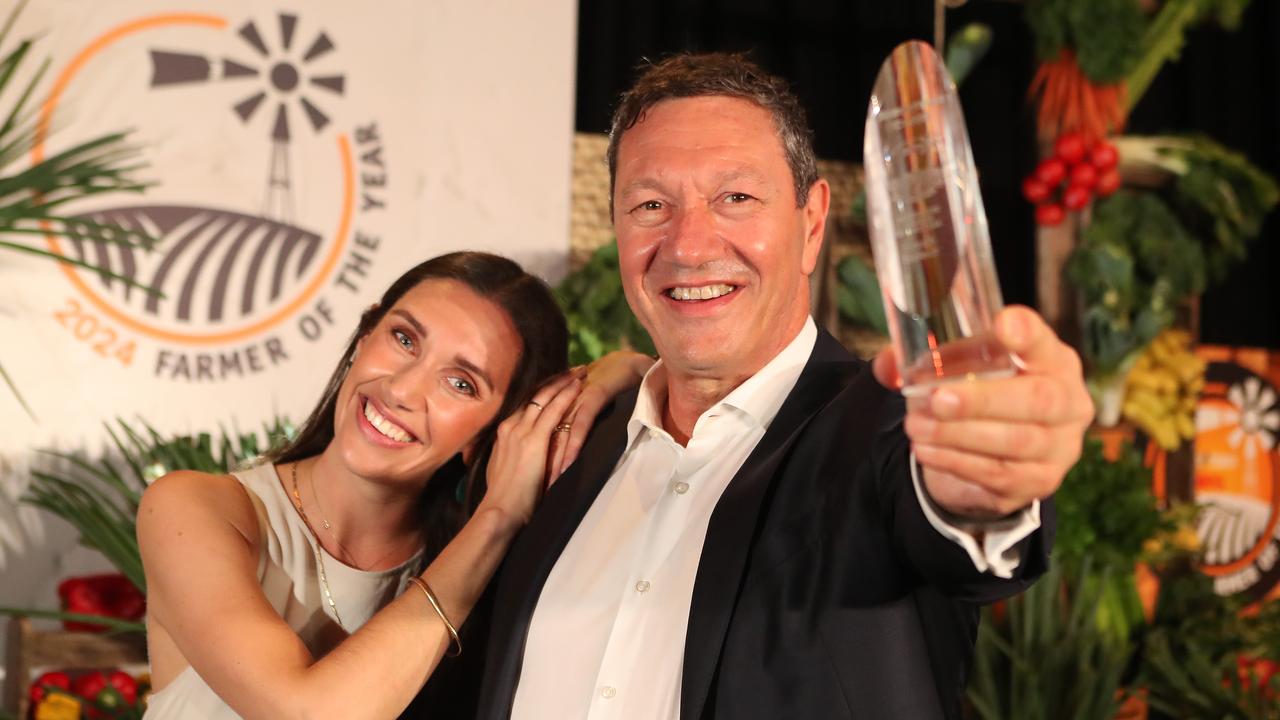Inside Dimbulah couple’s citrus farming operation
Far north Queensland grower Janus Boonzaaier might be new to citrus, but six generations of horticulture have laid the groundwork for his new enterprise. See how they do it.

Far north Queensland grower Janus Boonzaaier might be new to citrus, but six generations of horticulture have laid the groundwork for his new enterprise.
Janus and his wife Lindie were sponsored to move from South Africa in mid-2019, bought their first farm in 2020 and are now targeting production gaps in the market to maximise returns for their grapefruit, lemons and limes.
This year, they harvested their first grapefruit from trees that were just two years old, and expect to be in peak production within another two.
It’s been a whirlwind to say the least - taking an 18-hectare tobacco farm at Dimbulah west of the Atherton Tablelands and starting literally from the ground up to turn it into a fully functioning orchard.
But a love of agriculture, and particularly horticulture, has driven the couple who are keen to take advantage of a production region they believe can produce high value fruit.
While his knowledge of citrus was not strong, many years managing the family’s wine and table grape operation back in South Africa was an excellent background to launch into another horticultural crop.
Four years of work in another citrus operation in the region was integral, Janus said, in discovering what could be done and build on what he already knew about horticulture.
“I learned so much, and it was a large commercial operation, so it allowed me to gain skills and knowledge and contacts that I’ve been able to call on when we started growing ourselves,” Janus said.
The move to plant grapefruit was a deliberate and considered decision to target a production

window which was not well supplied from other citrus production areas across Australia.
And they resisted the temptation to plant trees like avocados or mangos, which are grown widely in the Atherton Tablelands, preferring to find a more niche crop to earn greater returns.
They planted 6000 grapefruit trees - Star Ruby and Sweet Sunrise - to target both the domestic and export markets at times when other regions and countries were not picking.
That’s all very well, but growing citrus in humid conditions has its challenges as well as advantages.
On the positive side, Janus said the high humidity meant better production and quicker tree growth.
“Because there is no moisture stress, the trees can transpire for longer, so they can put that into production,” he said.
Those young trees already produced 10 tonnes of grapefruit per hectare this year at just two years, and are expected to reach 40 tonnes/hectare in the third year of production and 60-70 tonnes/ha when they reach their peak.
The flip side, however, are challenges that come with growing fruit in a humid area, including pests and diseases.
To this extent, Janus has a scout who visits the trees regularly and advises on spraying programs.
“We probably spray every two to three weeks, as opposed to drier climates where they spray less,” he said.
“But we use integrated pest management, making sure that we use as few chemicals and soft chemicals as possible, to make sure that we don’t take out beneficial insects.”
That awareness of the environment doesn’t stop at spraying, and Janus has been conscious of treating his sandy soils and their biology with care.
He feeds the soils with a range of commercially available bacteria and fungi and strategically uses fertigation through the drip irrigation system to apply fertilisers in a manner which does not upset the microflora in the soil.
With an annual rainfall of about 800mm, and a massive 2800mm last year, irrigation is still required for the eight months of the year when it is dry.
That’s provided by a drip irrigation system set up on the new trees, and micro sprays on the lemon and lime farms he leases.
“The sandy soils lack a lot of nutrients but we have found the best way is to provide a little, and often, so when the trees get water, they pretty much always get nutrients,” he said.
With all the citrus, the key goal is to produce fruit to find those times when others can’t pick.
This takes careful management in the climate, especially for lemons where the biggest prices are paid in December and January when rain is common.
“You can have lemons on the tree and they look great, but if they are wet or the humidity is too high, they can get marked and then the buyers don’t want them,” Janus said.
There are also challenges with marketing the fruit, even when it’s produced out of season to many other areas across Australia.
Branding is something he is considering, especially when targeting export markets into south-east Asia where brand loyalty is common.

Already, Janus is set to export grapefruit to Japan from December while domestic fruit is sent to Brisbane, Melbourne, Sydney and Perth.
His big plan, he said, is to be able to avoid selling through agents, and to be able to market directly to supermarkets.
“We would like to think that the way we are producing our fruit, in a sustainable and careful way, will be an added marketing advantage, as well as being out of season,” Janus said.
“It would also be great if we could establish these relationships (with supermarkets) to be able to achieve a better average price across the season, and not the highs and lows.
“Yes, there are good prices for those production windows that are not well supplied but strong prices all year are the goal.”
There are no regrets from Janus about his big citrus adventure that has taken him to a new country and a new crop.
“While there are challenges in terms of costs and even buying land, the sense of pride you get in producing high quality is very rewarding,” he said.




